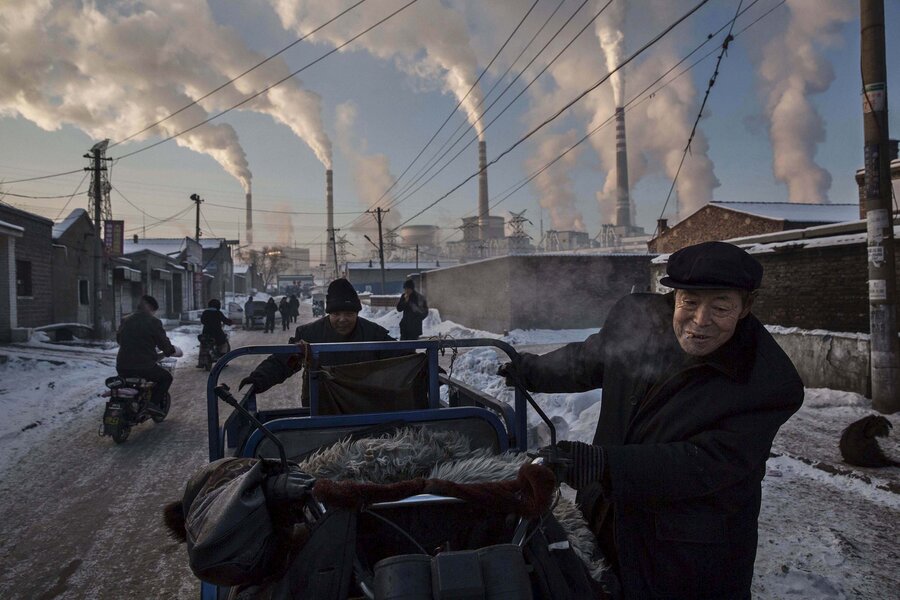Have China's carbon emissions already peaked?
Loading...
China is still the world's largest producer of greenhouse gas emissions — for now. But the energy giant may have already hit its carbon dioxide emissions peak 16 years ahead of schedule, a potential spur for the United States to honor its own climate commitments.
Humans' greenhouse gas output increased by about 0.5 percent in 2014, thanks to serious reductions from the world's largest carbon dioxide emitter. Climate scientists say that China’s carbon dioxide emissions may have peaked in 2014, the same year that President Xi Jinping promised President Obama a 2030 peak. Carbon emissions grew by just 0.9 percent in 2014, and coal consumption remained flat, while the economy continued to grow by seven percent.
"I'm of the opinion that this is a trend that will continue," Barbara Finamore, Asia director for the environmental-advocacy group National Resources Defense Council, tells Nature. "This is the new normal."
Coal, the world’s cheapest and dirtiest energy source, accounted for almost 45 percent of the world’s energy-related carbon dioxide emissions in 2011. And in China, the world’s biggest CO2 emitter, coal accounts for more than 75 percent of China's energy consumption.
Earlier studies may have overestimated China's coal use, helping the country meet its goals, but the government has also led efforts to limit nonrenewable energy and boost alternatives such as wind, solar, and nuclear power, strengthened in the country's latest Five-Year Plan.
"China's international commitment to peak emissions 'around 2030' should be seen as a highly conservative upper limit from a government that prefers to under-promise and over-deliver," Fergus Green and Nicholas Stern wrote last month in the journal Climate Policy.
The Chinese government releases statistics on energy consumption and production, but with often conflicting data, making outside estimates difficult. Some scientists say China has been underestimating its coal usage since 2000, burning up to 17 percent more per year than the government previously disclosed.
But it is clear that China produces more climate change-causing gases than any other country. For carbon dioxide alone, the leading cause of climate change from energy consumption, China produces 27 percent of the world’s emissions. The United States comes in second with 17 percent, followed by India and Russia with five percent each.
While the recent reductions are great news for China, climate scientists also note the importance of China's success for encouraging change around the world – particularly in the United States.
"It would certainly blunt the argument made by those who say Washington should not make ambitious climate commitments because China is the world’s main climate villain," Edward Wong wrote in The New York Times. It is easy for the United States to point fingers at China’s 10-point lead in overall emissions, but China also has a far larger population. If carbon dioxide emissions are looked at in terms of metric tons per person, the US rate of 17.62 tons per person far outweighs China's 6.52 metric tons person.
But China will have to address serious obstacles if 2014 is to remain its peak year. Energy use is expected to grow as urbanization climbs from 55 percent to its 2020 goal of 60 percent, and the country will have to decisively turn toward other non-coal sources of power.
Xie Zhenhua, China's senior climate change deputy, has said that carbon emissions did not peak in 2014 and are set to rise until 2030, suggesting China may fully utilize its remaining coal-burning days right up until deadline.
"I would be more confident to say that China has reached a plateau or period of low growth," Glen Peters, a scientist at the Center of International Climate and Environmental Research-Oslo, told The New York Times. "I think to say 'peak' is a little bold."
But climate scientists on both sides of the data – the skeptics and the optimists – agree that China is on track to reach its promised 2030 peak.






